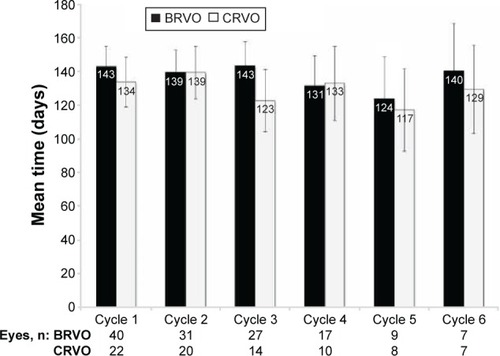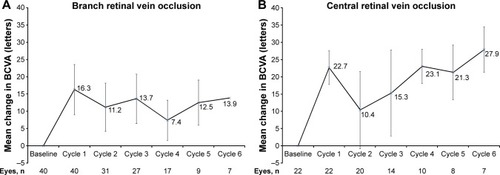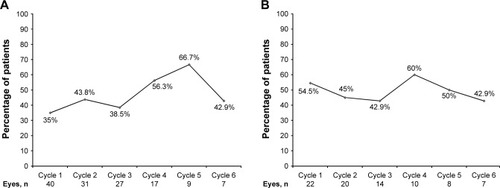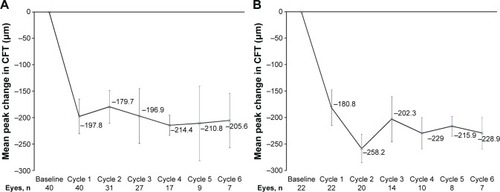Figures & data
Table 1 Baseline characteristics
Figure 1 Mean time to retreatment for each treatment cycle. Error bars represent 95% confidence intervals.

Figure 2 Mean peak change from baseline in best-corrected visual acuity (BCVA) in each treatment cycle.

Figure 3 Percentage of patients achieving three or more lines of improvement in best-corrected visual acuity in each treatment cycle.



